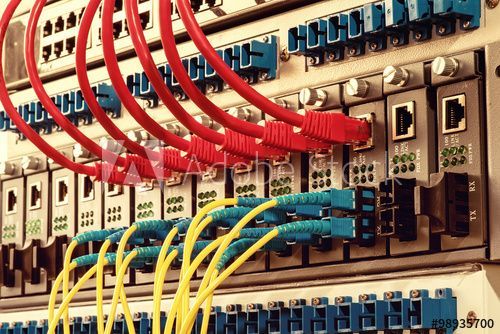Fiber Optic Network Cabling
What is Passive Optical Network (PON)?
Demystifying Passive Optical Networks (PONs): Everything You Need to Know
Passive Optical Networks (PONs) represent a significant advancement in network technology, revolutionizing the way data is transmitted to multiple users from a single source. In this comprehensive guide, we'll delve into the intricacies of PONs, exploring their types, components, benefits, limitations, and applications.
Understanding PON Technology:
PONs utilize a point-to-multipoint topology, employing optical splitters to distribute data across multiple user terminals. Unlike active optical networks, PONs operate in a passive state, requiring power only at the transmit and receive points. This inherent efficiency enables significant cost savings in system implementation.
Exploring PON Types:
Over the years, PON technology has evolved to accommodate varying bandwidth requirements and application needs. From the early days of APON and BPON to the latest advancements like XGS-PON and NG-PON2, each iteration offers unique speeds and characteristics catering to different use cases.
Benefits and Limitations:
PONs offer numerous advantages, including cost-effectiveness, reliability, ease of maintenance, and power efficiency. However, they also have limitations such as distance constraints and diagnostic challenges, which should be considered when implementing PON technology.
Applications and Future Trends:
PON technology finds applications in various domains, from residential broadband to enterprise networks and mobile backhaul. Additionally, advancements like Passive Optical LAN (POL) showcase the scalability and versatility of PONs, paving the way for future-proof network solutions.
Frequently Asked Questions (FAQs):
Addressing common queries about PON technology, we clarify aspects such as maximum speeds, differences between PON and GPON, ONT power supply requirements, and connection methods with WiFi routers.
In conclusion, Passive Optical Networks (PONs) represent a cornerstone in modern network infrastructure, offering unparalleled efficiency, scalability, and reliability. As technology continues to evolve, PONs are poised to play a pivotal role in shaping the future of connectivity.
Whether you're a network enthusiast or a business owner seeking the latest in network technology, understanding PONs is essential for staying ahead in today's interconnected world.
Related Articles:
- https://www.optcore.net/what-is-pon/
- https://en.wikipedia.org/wiki/Passive_optical_network
- https://www.viavisolutions.com/en-us/passive-optical-network-pon
- https://www.calix.com/blog/2022/05–may–/xg-pon–ng-pon2–50g-pon–how-to-tell-which-option-is-best-for-your-network.html
Recent POsts
Read Our Blog
Fiber Optics Cabling
Fiber Optics Cabling
FIBER OPTIC NETWORK CABLING
Find the best solution for your business.
Request a free consultation today and improve your network tomorrow.





